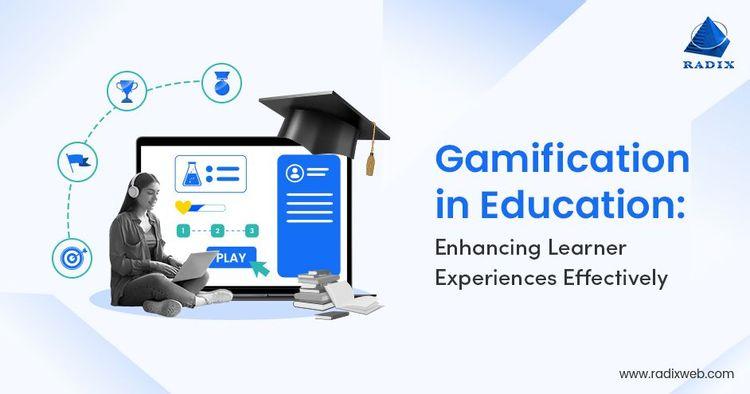The Future of Educational Gamification: Innovations Shaping Learning Success
Introduction: Gamification’s Growing Power in Education
In recent years, educational gamification has become a transformative force in classrooms, corporate training, and online learning environments. By blending gameplay elements—such as points, badges, leaderboards, and challenges—into educational contexts, gamification revolutionizes engagement, motivation, and effective learning. As technology evolves, so dose the potential for gamified education to shape the future of learning success. In this guide, we’ll look ahead to the innovations driving educational gamification and offer practical insights for educators, institutions, and learners.
The Evolution of Educational Gamification
Gamification is no longer just about adding games to lesson plans. Today, it harnesses elegant technology, learning science, and creative design to deliver personalized, immersive experiences. Key gamification strategies in education include:
- Adaptive Learning Mechanics: AI-driven platforms adjust difficulty and feedback to match individual progress.
- Social Collaboration: Group quests and peer challenges encourage teamwork and social learning.
- Instant Feedback: Real-time responses keep learners engaged and informed about their progress.
- Reward Systems: Points, badges, certificates, and leaderboards drive motivation and goal-setting.
Thes foundational elements set the stage for the next wave of innovation: technology-powered, personalized gamification experiences.
Innovations Shaping the Future of Gamified Learning
As digital tools and pedagogical research advance, gamification is evolving into a data-driven, collaborative, and immersive practice. Let’s explore the breakthrough innovations in educational gamification that are shaping learning success.
1.Artificial Intelligence & Adaptive Algorithms
AI enables educators to create personalized learning pathways where students experience content tailored to their strengths and challenges. Features include:
- Dynamic adjustment of questions and challenges for each learner
- Automated feedback and performance analytics
- Real-time data to help educators track progress
2. Augmented Reality (AR) and Virtual Reality (VR)
Immersive technologies like AR and VR are transforming the classroom into a space where abstract concepts are experienced firsthand. Top applications include:
- Virtual science labs with interactive experiments
- Historical simulations where students ‘live’ past events
- Gamified language learning environments with realistic avatars
3.social Learning & Multiplayer Experiences
Multiplayer games, collaborative quests, and peer competitions foster both engagement and social-emotional skills. Platforms integrate:
- Team-based challenges
- Live chat and video conferencing during “missions”
- group leaderboards and celebrations
4. Data-Driven Insights & Learning Analytics
Educators can use gamification platforms to collect and analyze performance data, identifying learning trends and tailoring interventions. This technology:
- Spotlights areas for betterment or enrichment
- Offers evidence-based feedback to students and parents
- Enables ongoing curriculum optimization
5.Microlearning & Mobile Gamification
Gamified mobile apps promote “learning on the go” with short,focused lessons,quizzes,and flashcards.Features include:
- Push notifications to encourage regular practice
- Rapid, game-like interactions suitable for busy schedules
- Progress tracking and daily challenges
Real-Life Case Studies: Gamification in Action
To illustrate the impact of educational gamification, consider these powerful case studies from around the globe:
Duolingo: Redefining Language Learning
This popular language learning app uses badges, XP (experience points), levels, and community leaderboards to motivate over 500 million users.Personalized lessons, kind competition, and streak rewards keep engagement levels high.
Kahoot!: Instant Feedback and Social Connection
Kahoot! has gamified formative assessment for millions of schools. With live quizzes, interactive polls, and lively competitions, teachers turn review sessions into memorable events that drive participation and retention.
Classcraft: RPG Mechanics in the Classroom
Classcraft blends role-playing game mechanics with everyday class management. Students form teams, unlock achievements, and solve quests linked to curriculum goals. Research shows significant improvements in classroom culture and academic performance.
Benefits of Educational Gamification
The research-backed benefits of educational gamification extend far beyond simple enjoyment. Students and educators alike report dramatic improvements in:
- Engagement: Game elements transform passive learning into active discovery.
- Motivation: Clear goals, rewards, and competition drive sustained effort.
- Retention: Immediate feedback and repetition enhance memory formation.
- Collaboration: Team challenges build interaction and group problem-solving skills.
- Inclusivity: Customizable content helps diverse learners succeed.
Practical Tips: Implementing Gamification for Learning Success
Ready to start incorporating gamification into your educational strategy? These tips will help maximize impact:
- Start Small: Introduce a few game elements in a single lesson or unit before scaling up.
- align With Learning Goals: Ensure that game mechanics reinforce, not distract from, curriculum objectives.
- Use Technology Wisely: Select platforms that provide real-time feedback, adaptive learning, and analytics for tracking progress.
- encourage Collaboration: Blend individual achievement with team-based rewards and group challenges.
- Monitor Engagement: Regularly evaluate student responses and adjust game dynamics to keep motivation high.
- Celebrate Success: Recognize progress with certificates, badges, and classroom celebrations.
First-Hand Experience: Educator and Student Perspectives
Many teachers and learners report dramatic shifts in motivation and outcomes after embracing classroom gamification. Here’s what they say:
“Since introducing gamified lessons, I’ve watched previously disengaged students compete to master math concepts. There’s a sense of joy and accomplishment in the room that just wasn’t there before.”
— Jessica L., Elementary School Teacher
“Earning badges and leveling up makes learning French way more fun for me. I actually look forward to practice sessions now!”
— Tariq, High School Student
Conclusion: the New Era of Learning Success
As we look to the future, educational gamification will continue to evolve, fueled by powerful technologies and new pedagogical insights. By embracing innovations—from AI-driven personalization to immersive AR/VR experiences—educators can create dynamic, inclusive learning environments that empower every student to succeed.
The journey towards gamified education is just beginning. Whether you’re a teacher, administrator, or lifelong learner, now is the perfect time to discover the creative possibilities of gamification and unlock new pathways to learning success.

